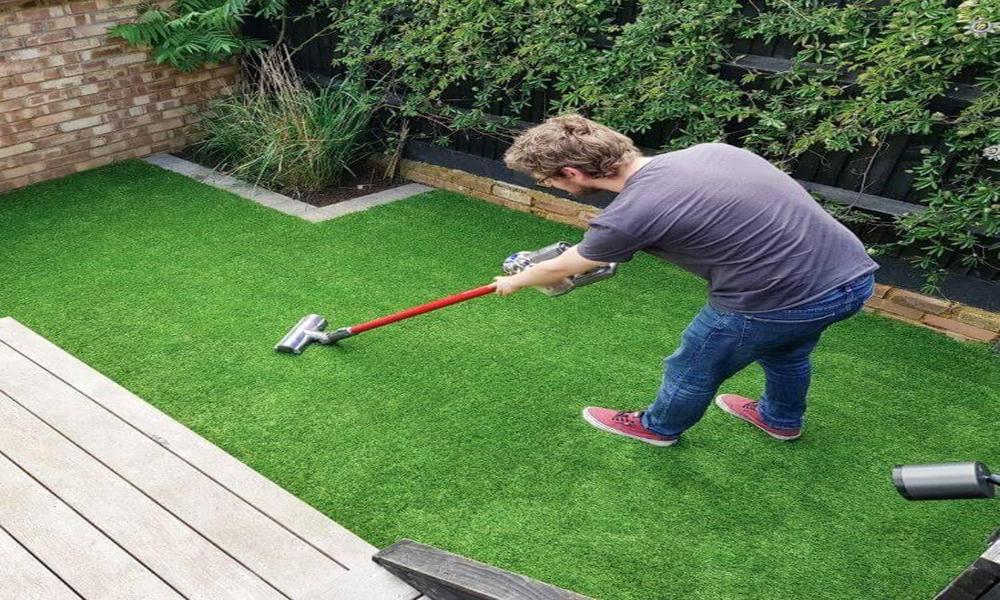Artificial grass, also known as synthetic turf, is a popular alternative to natural grass in landscaping and sports fields. Here are some of the features of artificial grass:
- Low maintenance: Unlike natural grass, artificial grass requires very little maintenance. It doesn’t need watering, mowing, or fertilizing, making it a cost-effective option for landscaping.
- Durable: Artificial grass is made of durable materials that can withstand heavy foot traffic and harsh weather conditions. It doesn’t fade or lose its shape over time, making it a long-lasting option for sports fields and high-traffic areas.
- Eco-friendly: Synthetic turf is made of recycled materials, such as recycled rubber and plastic, making it an eco-friendly option for landscaping.
- Versatile: Artificial grass can be used for a variety of purposes, including landscaping, sports fields, and playgrounds.
- Safe: Artificial grass is designed with safety in mind. It is non-toxic, non-allergenic, and has a soft surface that reduces the risk of injuries from falls.
- Consistent: Unlike natural grass, artificial grass provides a consistent playing surface that is free of bumps and uneven areas.
- Cost-effective: While the initial cost of installing artificial grass may be higher than natural grass, the long-term cost savings from reduced maintenance and water usage make it a cost-effective option in the long run.
Maintenance for Artificial Grass
Artificial grass, also known as synthetic turf, is a low-maintenance alternative to natural grass. While it does not require as much upkeep as real grass, it still needs some maintenance to keep it looking its best. Here are some tips for maintaining your artificial grass:
- Brush the grass regularly: Use a stiff brush to remove any debris or leaves that may have accumulated on the surface of the grass. This will help prevent the growth of mold or mildew.
- Rinse the grass: If you have pets or children who use the artificial grass frequently, it is a good idea to rinse it down with a hose every now and then to remove any urine or other spills.
- Remove stains: If you do notice any stains on the grass, use a mild detergent and warm water to clean them up. Be sure to rinse thoroughly afterwards.
- Control weeds: Although artificial grass does not require mowing, it is still possible for weeds to grow through the turf. Apply a weed control solution or use a weed barrier underneath the grass to prevent this from happening.
Benefits of Installing Artificial Grass
Low Maintenance: Artificial grass does not require watering, mowing, or fertilizing. This makes it a great option for people who want a beautiful lawn without the hassle of maintenance.
Saves Water: Since artificial grass does not require watering, it can help conserve water, especially in areas with limited water resources or in drought-prone regions.
Durable: Artificial grass is designed to withstand harsh weather conditions, including heavy rainfall, high temperatures, and even snow. This means that it will maintain its appearance and functionality for years to come.
Cost-effective: While the initial cost of installing artificial grass may be higher than natural grass, it can be a cost-effective investment in the long run. With little to no maintenance required, artificial grass can save money on water bills, landscaping costs, and maintenance fees.


